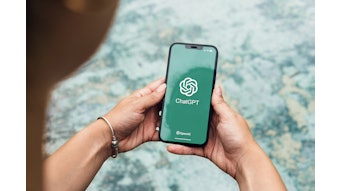
The retail mix is changing, fast. U.S. and other western consumers are increasingly skipping the long lines and chaos of brick and mortar holiday shopping in favor of online purchases. Globally, mobile commerce is expanding, particularly in key growth markets.
Previously: Tapping Consumer Instincts for the Holidays
Singles Day vs Black Friday
Holiday brick and mortar sales on Thanksgiving day and Black Friday totaled about $12 billion in 2015, a drop from 2014's totals, according to new numbers from ShopperTrak. Not only did retailers sell less, they had fewer customers.
To compare, Alibaba generated $14.3 billion in sales on November 11 (11/11), which the company calls the Global Shopping Festival and is known among Chinese as Singles Day.
“This year, we saw Black Friday ads emerge before Halloween, as retailers aimed to get at the shopper’s wallet early,” said Kevin Kearns, ShopperTrak chief revenue officer. “And from our data, we saw greater retail sales generated prior to the Black Friday weekend, which is a result of retailers successfully elongating the holiday season. Ultimately, while many question the ongoing relevance of Black Friday, it is still the biggest sales day of the year and signals the start of the holiday shopping season.”
Per person gift spending for the weekend totaled $229.56, with consumers under 35 spending an average of $425.08.
Some retailers opted out of Black Friday entirely, most notably outdoors giant REI. Though of course that company happily participated in Cyber Monday, offering deals on Revelcloud jackets and Merrell Glacier Shell winter boots.
Cyber Everyday
The National Retail Federation (NRF) noted that more than 103 million consumers shopped online on Black Friday. The data concurs with that of ShopperTrak, which discovered that even the consumers that went in-store previously researched products online and "targeted" their brick and mortar visits as a result.
Cyber Monday wasn't without its hiccups, with the day's popularity causing massive outtages for Target and Neiman Marcus. Despite this, the National Retail Federation’s Cyber Monday Expectations Survey found that 121 million U.S. shoppers planned to shop online on Cyber Monday, a slight decline year-over-year, while 29.6 million said they will use their mobile device to shop.
Last year, shop.org's research found that nearly 70% of retailers were optimizing their mobile sites ahead of the holidays.
Further reading: Capture, Match and Purchase: Color Capture in Beauty
“In addition to a more fluid experience on retailers’ websites and on mobile, consumers can expect to see free shipping offers and better-than-ever programs for buy online and pick-up in store for those omnichannel shoppers,” said NRF senior vice president and shop.org executive director Vicki Cantrell.
These consumers shop throughout the day, watching how deals and shipping discounts evolve in real time. This creates opportunities for retailers to adjust strategies in real time.
Retail 2020: Fragmented & Mobile
Mobile commerce sales accounted for 68.7% of the total 11/11 Singles Day sales in 2015, a steep rise from last year's 42.6%. Alibaba noted that many rural consumers have "leap frogged" PCs and are diving straight into mobile purchases.
Given these results and those of of this year's U.S. holiday season so far, it is no surprise that Euromonitor is forecasting e-commerce and m-commerce growth through 2020, particularly in key growth areas like Australasia and Asia Pacific.
The mobile retail power in Asia Pacific alone is $314 billion, according to Euromonitor. As noted, Asia Pacific and Australasia will enjoy the largest share of online commerce via the mobile channel, followed by North America and Western Europe and, to a lesser extent, the Middle East and Africa, Eastern Europe and Latin America.
Simultaneously, according to an analysis by PWC, U.S. retail channels will be more fragmented in 2020. Brick and mortar, in particular, will need to be responsive to consumers with product information and user opinions at their fingertips. Careful positioning will be required for success.
Today's consumer trends and forecasting give us a window into the future of retail, which will increasingly be dominated by online sales and, in many regions, mobile.










